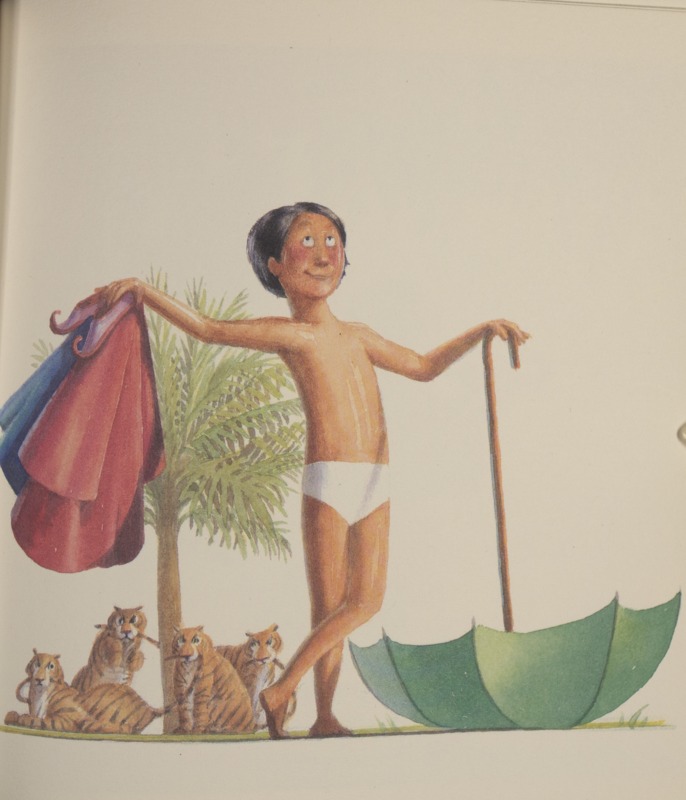The Story of Little Babaji (2002)
Dublin Core
Title
Description
The Story of Little Black Sambo is rooted in intense racialized stereotypes of black people and black children in particular. Originally published by Helen Bannerman in the late 19th century, the story displays discriminatory pickaninny caricatures that demoralize and dehumanize black boys. In Little Black Sambo: Revisted, Nina Mikkelson writes that the original illustrations depicted “[Sambo] and his parents [with] large accentuated lips and rolling eyes.” However, newer versions of the story, like The Story of Little Babaji, pictured above, convert the story to a more acceptable and realistic children’s literature.
The images show a boy, Babaji, standing tall with his clothes in one hand and the umbrella in the other. These illustrations show realistic characters instead of racist caricatures like the pickaninny, evident in older versions of the story. In this newer version, illustrated by Marcellino, Babaji has proportioned arms, legs, and feet. His body is the shape of other boys’, not emaciated or couched as some older artists depict, and his face does not have large lips or wide eyes. Instead the character looks like a normal human boy.
